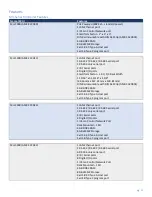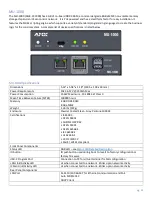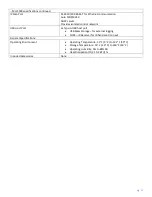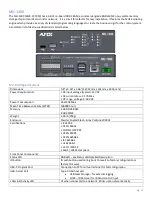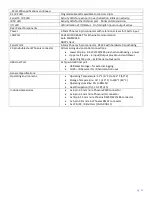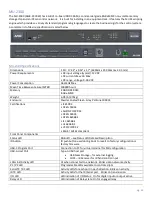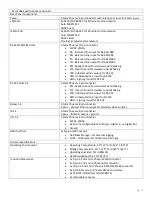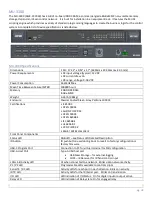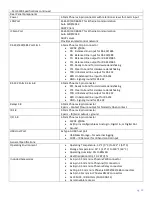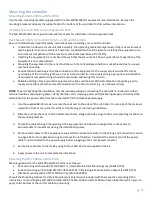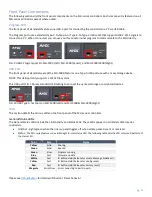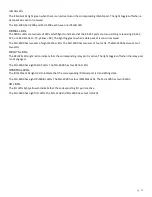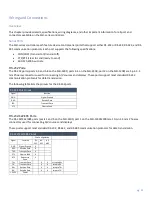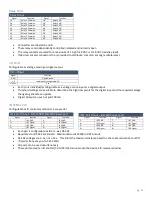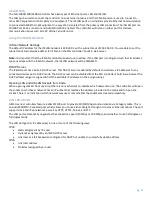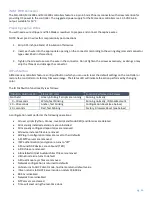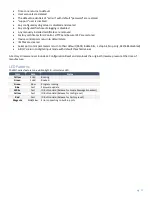
pg. 25
ICSLAN Ports
The MU-1000/2300/3300 controllers have two types of Ethernet ports: LAN and ICSLAN.
The LAN port is used to connect the controller to an external network, and the ICSLAN ports are used to connect to
other AMX equipment or third-party A/V equipment. The ICSLAN ports on all models provide Ethernet Communication
to connected AMX Ethernet Equipment in a way that is isolated from the primary LAN connection. The ICSLAN port is a
10/100 Port RJ-45 connector and Auto MDI/MDI-X enabled. The controller will listen on either port for Harman
communication buses such as ICSP, HIQnet, and HControl.
Using the ICSLAN Network
ICSLan Network Settings
The default IP address for the ICSLAN network is 198.18.0.1 with a subnet mask of 255.255.0.0. You are able to set the
subnet mask and network address for ICSLan on the MU controller’s built in web server.
Note:
It is important that the ICSLAN and LAN subnets do not overlap. If the LAN port is configured such that its address
space overlaps with the ICSLAN network, the ICSLAN network will be DISABLED.
DHCP Server
The ICSLAN port has a built-in DHCP server. This DHCP server is enabled by default and will serve IP addresses to any
connected devices set to DHCP mode. The DHCP server can be disabled from the MU controller’s built in web server The
DHCP address range is assigned to half the available IP addresses in the assign subnet.
Opening LAN and ICSLAN Sockets from Code
When opening sockets from any script there is no mechanism to indicate which network to use. The controller will open
the socket on whichever network has an IP subnet that matches the address provided in the command to open the
socket. There is no indication which network was used, only whether the socket was created successfully.
LAN 10/100 Port
All MU-series controllers feature a LAN 10/100 port to provide 10/100 Mbps communication via Category cable. This is
an Auto MDI/MDI-X enabled port, which allows you to use either straight-through or crossover Ethernet cables. The port
supports IPv4 and IPv6 networks, as well as HTTP, HTTPS, Telnet, and FTP.
The LAN port automatically negotiates the connection speed (10 Mbps or 100 Mbps), and whether to use half duplex or
full duplex mode.
The LAN port gets its IP address(es) in one or more of the following ways:
IPv4
•
Static assignment by the user
•
Dynamic assignment by an IPv4 DHCP server
•
Link local as a fall back when configured for DHCP but unable to successfully obtain address
IPv6
•
Link local address
•
Prefix(es) assigned by a router

